9 Most Popular Surfing Injuries and 3 Tips to Avoid Them
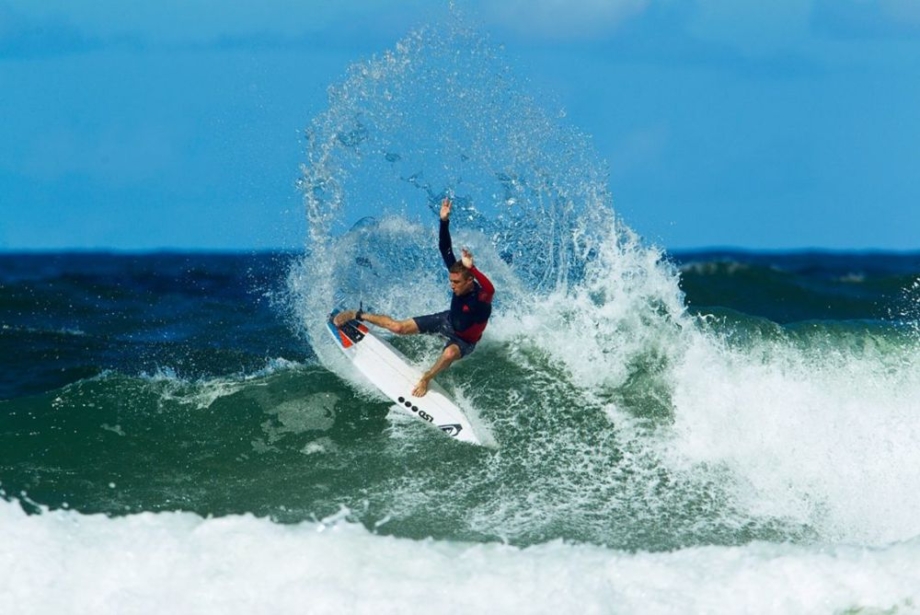
The popularity of surfing comes from the excitement of experiencing the ocean by riding the tides and being close to its nature. Nonetheless, this thrilling water sport also has potential surfing injuries brought about by the ever-changing ocean environment and physical demands on the body.
From complete novices to seasoned pros, all surfers should know which are the most common surfing injuries in this kind of sport. These identified risks in our article will help surfers proactively prevent any harm that may come to ensure safe environments for everyone. Let’s get started!
9 Common Surfing Injuries
Surfing is a great way to connect with the sea, but be aware that it can sometimes prove dangerous. These are some of the nine commonest forms of injury that may occur while surfing, so you need to stay focused on safety as you shred.
1. Lacerations and Cuts
Common injuries in surfing include cuts and lacerations from various objects during a wipeout or paddling. These surfing injuries can result from contact between surfers and board, fins, rocks, coral reefs, or marine life. The severity of these injuries varies from mere scratches to deep gashes requiring stitches.
Surfing injuries statistics show that lacerations are one of the major types of injuries that occur during wiping out when beginner surfers have not yet acquired enough balance and control over their boards.
Staph infection is a severe one caused by Staphylococcus bacteria. In 2017, about 119,00 people were affected, leading to nearly 20,000 deaths. The bacteria can be fatal when penetrating the bloodstream.
First and foremost, stop the bleeding when you get a cut while surfing and visit the doctor for it to be cleaned properly, disinfected, and closed to minimize the chances of infection.
2. Head, Neck, and Shoulder Trauma
Surfing requires a lot of paddling and maneuverability which can result in common injuries in surfing, such as sprains, strains, and dislocations that occur in the head, neck, or shoulder region. Additionally, wipeouts may have more severe consequences like concussions or fractures due to impact on the surfboard, water, or ocean floor.

Head, neck, and shoulder injuries are a major concern in surfing, as indicated by statistics from surfing injuries Symptoms of surfing head injuries range from mild headaches and dizziness to concussion that will cause confusion, memory loss, and even loss of one’s consciousness.
Therefore, warm up properly before paddling out to prevent these surfing injuries. Maintain correct posture and good paddling technique to ease the strain on your necks and shoulders. A soft-top surfboard is ideal for beginners since it reduces the risks associated with board collisions. If, after surfing, you feel pain or discomfort in your head, neck, or shoulders, seek medical help so that a proper diagnosis can be made, followed by a treatment plan.
3. Eye Injuries
Saltwater, wind, and flying objects can all cause eye injuries among surfers. Saltwater can be irritating and sting while wind can parch the eyes and leave them more exposed to dust particles and other foreign bodies. However, in surfing, collisions are responsible for some of the most serious damage to the human eye caused by contact with the surfboard, fins, or other surfers’ boards.
Untreated surfing head injuries such as those involving eyes may lead to permanent consequences. In case this happens after a surf trip one should rinse their eyes using clean water or sterile saline solution and then seek medical attention immediately. Beginners must wear helmets when participating in surfing while experienced ones use a fitting high-quality surf leash to reduce eye injury risks tremendously.
4. Ear Conditions (Surfer’s Ear and Infections)
The ear canal’s cold, wet conditions resulting from cold air getting into it cause a surfer’s ear during surfing, which involves exposure to cold water. This repeated exposure irritates bony growths known as exostoses that surround the ear canal, making it narrower, thereby catching water inside, sometimes leading to infection. Painful earache, partial hearing loss, and plugged ears are also symptoms of a surfer’s ear.
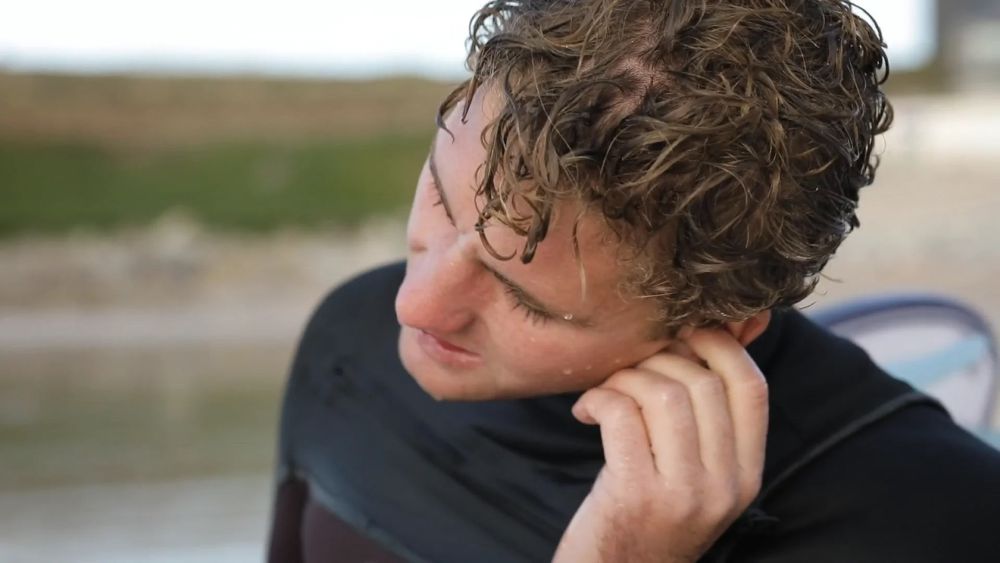
Wearing earplugs designed for water use is crucial to preventing ear surfing injuries. These plugs are constructed to bar the ear canal from any elements. While surfing, it is also important to dry the ears properly and use ear drops, which are advised by a doctor to minimize the chances of being infected. If left untreated, a surfer’s ear can worsen over time and necessitate surgical intervention to remove extra bone growth and restore the opening of the ear canal.
5. Bone and Muscle Injuries
Surfing is an activity that makes demands on one’s physical strength, and in this regard, it may cause different injuries to bones and muscles. They vary from mild sprains and strains to severe fractures or ligament tears.
- Sprains and strains: these are common surfing injuries, affecting the ankles, knees, and surfing back injuries. Sprains (torn ligaments) and strains (muscle/tendon tears) limit joint movement and cause pain/swelling. Sprains affect bone connections, while strains impact muscles and their attachments. The RICE (rest, ice, compression, and elevate) therapy is useful in this situation. Physical therapy also helps muscles heal later.
- Painful fractures: These can lead to severe pain, rib injury surfing, deformity of limbs, and loss of movement. To diagnose and treat this surfing rib injury promptly, immediate medical attention is required, which might include casting, splinting, or surgery.
- Surfing knee injuries: these surfing injuries are also common amongst surfers like ACL (anterior cruciate ligament) and MCL (medial collateral ligament) tears. Therefore, tears can cause major instability, swelling, and pain. Surgical reconstruction is usually necessary for ACL tears, but MCL tears are managed through bracing and physical therapy.
- Hip flexor strain: This is another common surfing injury, particularly for beginners. The hip flexor muscles help with hip flexion. When these muscles are strained by repetitive paddling motions, they result in anterior hip pain and tightness. Rest, stretching, and proper paddling techniques can help prevent and manage hip flexor strains.
- Ankle stiffness: This can be a lingering effect of various surfing injuries, especially ankle sprains. Stiffness can limit a surfer’s range of motion and affect balance on the board. Regular stretching, massage, and physiotherapy can help improve ankle mobility and flexibility.
6. Cranial and Facial Fractures
One of the worst surfing injuries is cranial and facial fractures. These occur when a surfer collides with the surfboard, other surfers, or underwater objects. The severity of cranial or facial fractures may vary greatly, while its symptoms can range from headaches and dizziness to bruises on the face, disfigurement, and loss of consciousness. In any case of head injury, it is important to see a doctor urgently. If detected early enough, this injury will be treated in good time to prevent complications and guarantee proper recovery.

These surfing injuries can be minimized by wearing a well-fitting helmet, especially for beginners. A helmet helps absorb energy from impacts during collisions, thereby significantly reducing the incidence of skull fractures. Another way to decrease accidents is by choosing breaks that have suitable wave sizes and staying away from crowded areas where the chances of running into other surfers are high.
7. Shoulder Impingement
Shoulder impingement is a common surfing injury caused by repetitive paddling motions. Repeated paddling can irritate and inflame tendons at the shoulder joint area. This inflammation causes shoulder pain and tenderness, particularly when reaching overhead. Surfers may also experience weakness and difficulty paddling effectively.
To avoid surfing shoulder injury, surfers need to concentrate on paddling correctly. Warming up with paddling exercises before entering the water and stretching afterward can also help. If you are experiencing pain in your shoulders while surfing, take some time off and think about consulting a physician or physical therapist for treatments like rest, ice packs, and anti-inflammatory drugs. In extreme cases, surgical operation may be required.
8. Bruises
Bruises are another frequent surfing injury. They are usually caused by blunt trauma, such as collisions with the ocean floor, other surfers, or even the surfboard itself. Bruises are generally not serious, but they can be quite painful and tender, affecting balance and agility when in water.
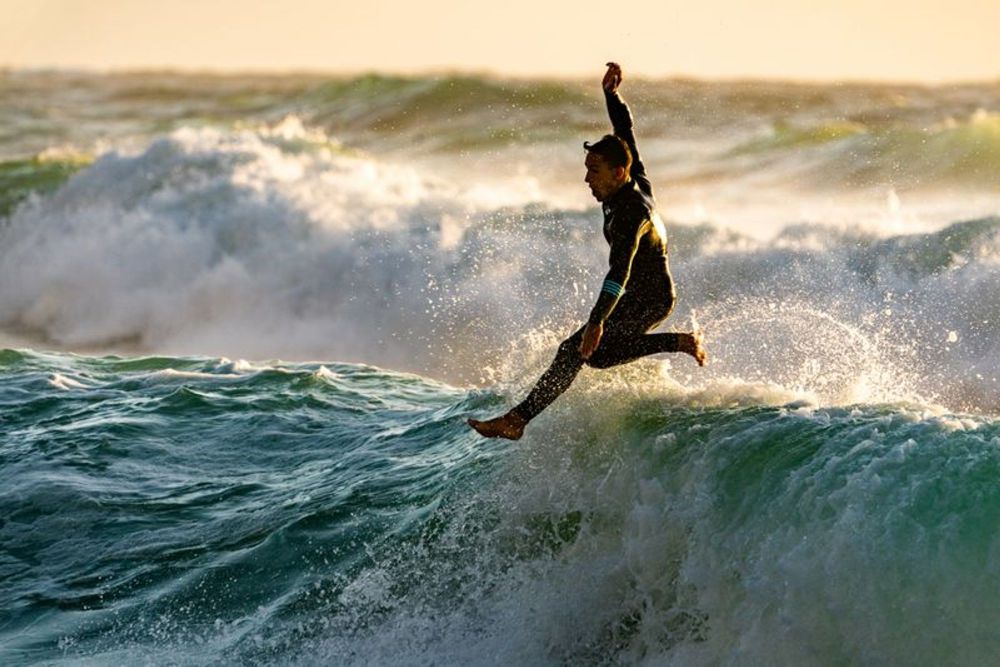
Most bruises heal within two weeks without intervention. Resting is important, as is applying ice and compression to reduce any swelling that might occur. When you are surfing, wearing a rash guard will protect against minor scrapes and bumps. However, for severe bruises, especially those that come with substantial pain or restriction of movement, it is advisable to seek medical attention to rule out any underlying damage to bone or tissue in those areas.
9. Marine Animal Encounters
Although not common, people surfing can get injured by marine animals. These injuries include stings from jellyfish, cuts from coral reefs, and bites from sea creatures. The severity of the injury will depend on the kind of animal and the occurrence that led to it.
If you happen to be stung by a jellyfish, make sure you gently remove any traces of tentacles and wash with seawater. Cold compresses may help reduce swelling and pain. In case of a bite or cut, apply saltwater lavage to sterilize the wound. If possible, put a bandage to prevent infection. If the wound is deep, bleeding profusely, or showing signs of infection, please seek medical intervention.
Sharks might also come to mind, but attacks are rare. In 2018, the US saw just 53 unprovoked incidents, none fatal.
Protecting oneself from this involves surfing with a rash guard, being aware of the environment, and avoiding dangerous coral reefs and areas with high jellyfish populations.
3 Prevention Tips for Common Surfing Injuries
While the thrill of riding a wave is undeniable, it does come with its own set of challenges. It doesn’t matter how good you are at dodging things; let us take you through 3 must-know tips for avoiding everyday common surf injuries.
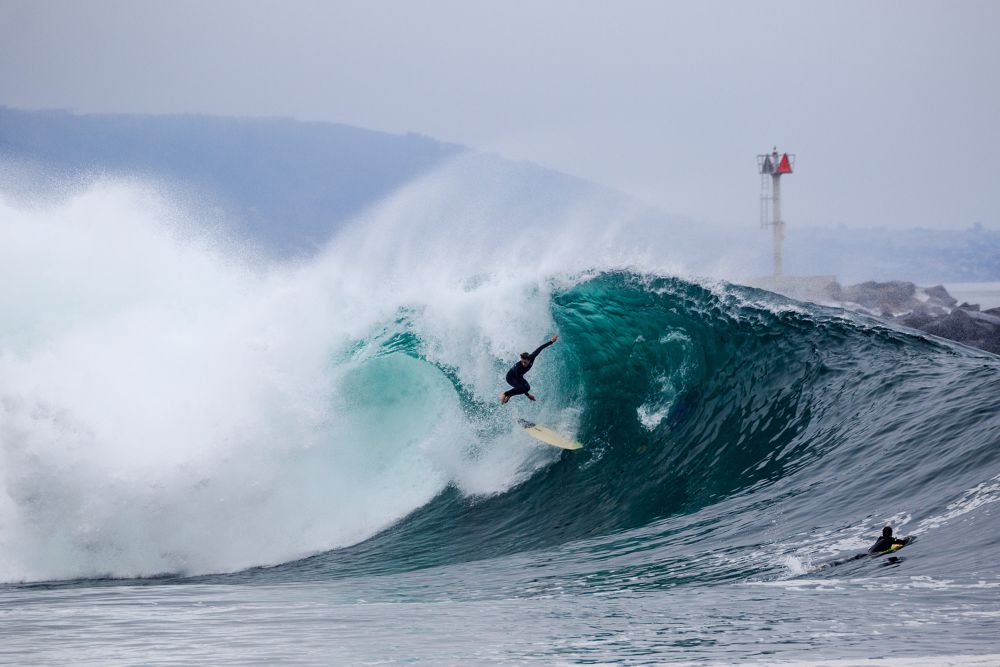
1. General Safety Measures
Surfing is an intense body workout that exposes participants to the ever-changing power of the ocean. It is important to place general safety first for reducing surfing injuries.
- Warming Up and Physical Fitness: Before you start hitting the waves paddling around and popping up on your board, prepare your muscles and joints for these activities by warming up progressively through stretching exercises such as dynamic stretches, mild cardiovascular workouts, and mobility exercises. Exercising regularly also helps to improve physical fitness, which leads to lessening the risk of surfing-related injuries through increased strength, stamina as well as flexibility.
- Surfing Etiquette: Surfing etiquette dictates surfer behavior in the water, minimizing collisions and ensuring a safe and enjoyable experience. Following these guidelines, such as giving way to surfers with the right of way and paddling out wide to avoid catching waves ridden by others, significantly reduces the risk of surfing injuries caused by accidental board or body contact.
2. Equipment-Based Prevention
The right equipment can significantly reduce the risk of surfing injuries. Careful selection and proper use of safety gear are paramount.
- Leash: A leash is a non-negotiable safety item. It tethers you to your surfboard, preventing it from becoming a projectile in case you wipe out. Choose a leash appropriate for your board size and surfing conditions. Leashes come in different lengths and thicknesses, with thicker leashes offering more excellent durability in larger waves. Consider a quick-release mechanism on your leash for emergencies.
- Helmet: For novices and surfers finding themselves in difficult surfing conditions, a helmet is an extremely essential need. It helps avoid surfing injuries that may be caused by contact with the board, reef, or other surfers that can cause severe injuries while surfing. The helmet should fit well and also have water sports certification.
- Reef Booties: You should wear reef booties when you are going to surf on reefs or rocky shorelines. They protect against cuts from sharp rocks and coral abrasions as well as aiding in better traction upon entry into or exit from slippery surfaces.
- Wetsuit: A right-fitting wetsuit will help you fight off harsh weather elements while enjoying longer surfing sessions even in colder waters. When it is loose, it can chafe your limbs, whereas when tight, it might hinder your movement.
3. Environmental Awareness
We need to understand our surroundings to prevent surfing injuries. Here are some key areas for environmental awareness:

- Weather conditions: Ensure you check the weather forecast every time you leave home. Strong winds and currents, as well as storms, can significantly change wave behavior, leading to dangerous situations. Look for offshore winds, which create cleaner waves, and beware of onshore winds, which make lumpy, unpredictable conditions.
- Wave conditions: Assess the wave size, power, and consistency before entering the water. Beginners should choose smaller waves in gentle conditions to minimize the risk of surfing injuries. Pay attention to the wave period, the time between breaking waves. Longer intervals between waves can indicate stronger currents, while shorter intervals can indicate a crowded lineup.
- Local hazards: Research the specific beach you plan to surf. Be aware of potential hazards like rip currents, rocks, or underwater structures that could cause injury. Rip currents are dangerous and can pull even strong swimmers out to sea. If caught in a rip current, stay calm and swim parallel to the shore until you escape the current’s pull, then swim towards the shore at an angle.
Effective Response to Injuries
While preventing surf injury is always the best approach, wipeouts, and unexpected bumps are a reality. In the unfortunate event you experience an injury, here are some key steps to ensure a safe and effective recovery.

First Aid Tips for Surfing Injuries
Many common surfing injuries can be addressed with basic first-aid measures. Here’s a quick guide:
- Minor cuts and scrapes: Clean the wound thoroughly with clean water and mild soap. Apply a gentle antiseptic solution and cover with a sterile dressing.
- Muscle strains and sprains: Apply the RICE principle: Rest, Ice, Compression, and Elevation. Rest the injured area for at least 24 hours. Apply ice packs wrapped in a towel for 15-20 minutes at a time, several times a day. Use a compression bandage to reduce swelling and elevate the injured limb above the heart.
- Surfer’s ear (exostoses): While not typically an immediate injury, early intervention can help prevent further complications. Avoid using cotton swabs in your ears, and wear earplugs specifically designed for surfers to keep water out.
It’s important to seek medical advice immediately and follow the doctor’s instructions for more serious surfing injuries until you fully recover.
When to Seek Professional Medical Help?
Not all surfing injuries require a trip to the emergency room. However, there are situations where seeking professional medical help is crucial. Here are some guidelines:
- Signs of a concussion: Seek medical attention immediately if you experience any of the following after a head injury: severe headache, dizziness, confusion, nausea or vomiting, difficulty concentrating, slurred speech, or loss of consciousness.
- Bone fractures: If you suspect a broken bone due to pain, swelling, deformity, or difficulty using the limb, go to the emergency room for a proper diagnosis and treatment.
- Severe lacerations: Deep cuts or wounds with excessive bleeding require professional medical attention to clean, close, and potentially stitch the wound to minimize scarring and risk of infection.
- Loss of function or deformity: Inability to move a limb normally or any visible deformity warrants a doctor’s evaluation to assess potential ligament or bone damage.
- Unrelenting pain: Persistent pain that doesn’t improve with home care or worsens over time is a sign that you may need a doctor’s evaluation to determine the underlying cause and get appropriate treatment.
By recognizing the severity of your surfing injuries, you can ensure you receive the appropriate level of care.
Recovery and Rehabilitation
Recovery from surfing injuries is an individual process, and the time frame depends on the severity of the injury. Generally, the healing process involves a multi-pronged approach:
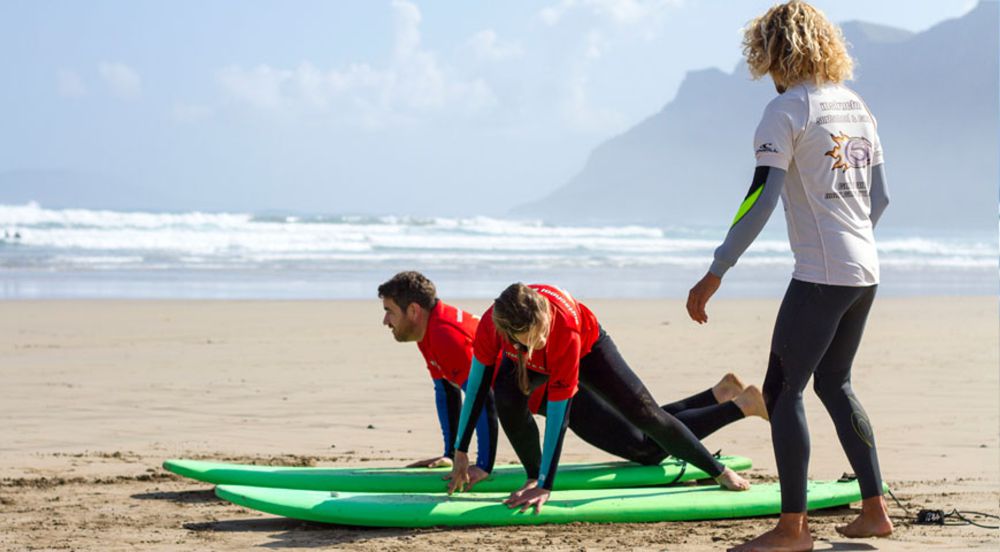
- Rest: Taking time off from surfing allows the body to focus on healing. The duration of rest depends on the injury. Minor sprains might require a few days off while recovering from a broken bone, which can take weeks or even months.
- Rehabilitation: Following a physical therapist’s exercise guidance is crucial for regaining strength, flexibility, and range of motion. Rehabilitation plans are customized based on the injured area and its function. Therapists will design exercises that progressively challenge the injured tissues, promoting healing and preventing future complications.
- Pain Management: Over-the-counter pain relievers or doctor-prescribed medication can help manage discomfort during recovery. Pain can deter physical therapy exercises, so managing it effectively is essential. However, medication should not be a substitute for proper rehabilitation.
Returning to previous surfing skill levels after an injury can be challenging. Be patient with yourself and gradually increase training intensity as your body allows. Proper form and technique are important to prioritize to minimize re-injury risk.
Untreated surfing head injuries, such as those involving eyes, may lead to permanent consequences. If this happens after a surf trip, one should rinse their eyes using clean water or sterile saline solution and then seek medical attention immediately. Beginners must wear helmets when participating in surfing, while experienced ones use a fitting, high-quality surf leash to reduce eye injury risks tremendously.
Use Boost Fin for More Enjoyable Surfing
Boost Fin can elevate your surfing experience. These innovative fins incorporate a motorized feature, assisting you in paddling out and catching more waves. This translates to less time spent battling currents and more time riding waves, maximizing your enjoyment.
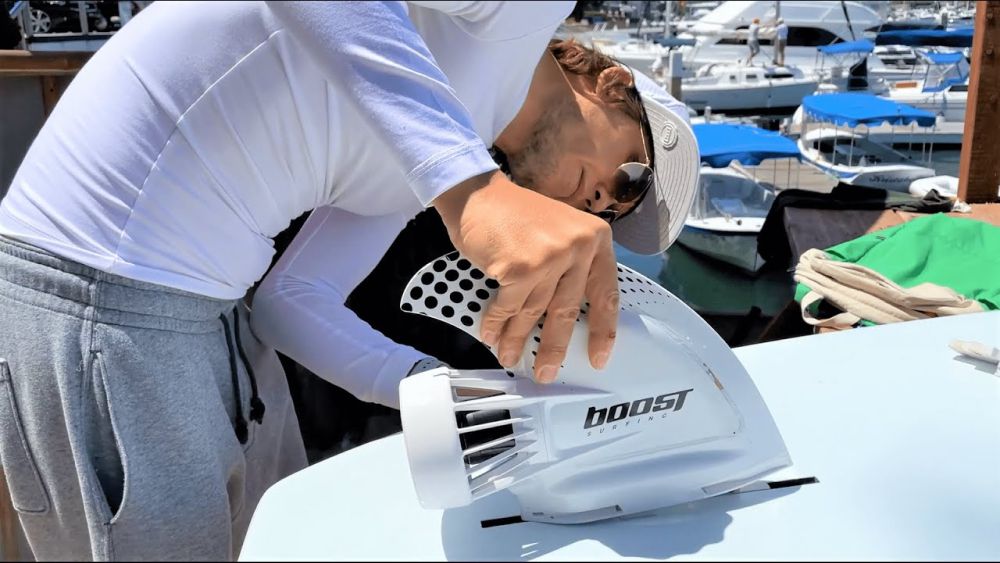
Moreover, Boost Fin is adept at minimizing fatigue, which significantly reduces the risk of falls and surfing injuries. This feature is particularly beneficial for surfers recovering from injuries or those who may not have the same physical strength as before. It serves as an invaluable tool, assisting them in returning to and enjoying surfing with renewed confidence.
Whether you’re an experienced surfer or just starting out, Boost Fins promises to enhance your time in the water, letting you concentrate on the pure joy and thrill of surfing.
Safer and Better Paddling with Boost Fin
Understanding common surfing injuries and taking preventative measures can minimize your risk and maximize your enjoyment in the waves. Now that you know how to address surfing injuries, let’s get you out there and catch waves!
And here’s where Boost Surfing’s electric fins come in! Consider adding these innovative fins to your surfboard for an extra kick of power and performance. Let Boost Surfing elevate your surfing to new heights and help you shred the waves like never before!
